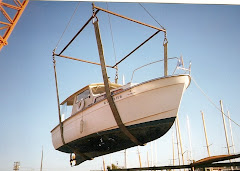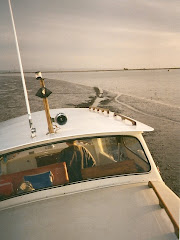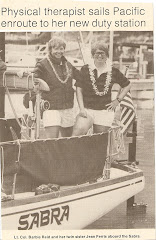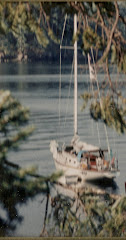In The Wake of Lt. Peter Puget:
Keeping the Continental Shore to Starboard
June 2012
by
Barbara Cullen Reid (Hira), USA Retired, LTC.
Commander of the 40 year old MV Shatoosh, Albin 25, HN 1124
Built in Kristinehamn, Sweden in 1972 and
Pashmina 2-1996 Porta-Bote
and
Consort Vessel, MV Skol 2, 2003 Arima Sea Chaser 16
Commanded by John Elmore, alias, Too Tall Tom
220 years ago, in 1792, an historic event took place in the Pacific Northwest corner of the United States of America. The British Captain George Vancouver, Captain of HMS Discovery and Lt. and Commander William Broughton of the consort ship, HMS Chatham, entered the Strait of Juan de Fuca and began their epic exploration of the waters of the majestic Salish Sea searching for the illusive Northwest Passage which would connect the Atlantic and Pacific Oceans.
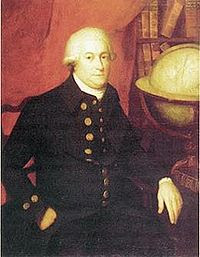 |
| Captain George Vancouver |
.jpg) |
| HMS Discovery |
 |
| Stefan Freelan Graphic designer WWU |
“The HMS Discovery was of 337 tonnage, a Sloop of War with a deck length of 96 feet, beam of 27 feet, draft of 15 feet, and carried guns: ten 4-pounders and ten swivels. Muster roles accounted for 100 men ages 16 - 38 years old. She carried several smaller vessels that would assist the crew in exploring the continental shoreline with a greater intimacy and accuracy." Peter Puget, Newell and Wing
 |
| Model of the HMS Discovery |
A large scale model of Captain George Vancouver’s ship of exploration, HMS Discovery, from which Lt. Peter Puget led the survey crews whose charts put the Northwest on the maps of the world. The Discovery model, commissioned by Discovery Modelers Education Center in Seattle, currently is on loan for display at the Foss Waterway Seaport Museum in Tacoma, Washington. Permission to use photo granted by: The Discovery Modelers Education Center, 860 Terry Ave. N, Seattle WA 98109. 206-282-0985
"Since the killing of Captain Cook in Hawaii, Britain ordered ships exploring in remote parts of the world to travel in tandem. Thus, the HMS Chatham became the consort vessel of the HMS Discovery and was of 135 tonnage, an Armed Tender, brigantine rigged with a deck length of 65 feet, beam of 21.5 feet and carried guns: four 3-pounders and six swivels. Muster roles revealed 45 men ages 17-45” Peter Puget, Wing and Newell
 |
| Lt William Broughton |
 |
| HMS Chatham |
Life at sea was not easy; the ships were over crowded and odoriferous, the teen aged able bodied seamen were over worked, underfed, often punished when they disobeyed the rules by flogging using a cat of nine tails. They slept in swinging hammocks with 18inches of space and Captain Vancouver, age 33, was known for his fierce anger and difficult demeanor.
Both ships of His Majesty, King George III’s Royal Navy had started their journey from England on 1 April 1791, sailing south around the Cape of Good Hope, New Holland(Australia), New Zealand, through the South Pacific islands, the Sandwich Isles (Hawaii) and in March 1792 they set sail for the west coast, known to the British Maritime as New Albion, but, to us and more specific, the coastal waters of Mendocino Point, California . They followed the coastline north, “keeping the continental shore to starboard” and needed information about finding and entering the Strait of Juan de Fuca.
The Strait of Juan de Fuca had even been illusive to Captain Cook. It is interesting to note that the young 13 year old George Vancouver sailed with Captain Cook when they could not find the Strait. Now at age 33 he is about to make another attempt at finding this illusive strait. Maritime information held that Captain Robert Gray, aboard the Lady Washington had sailed about 20 miles up the Strait the previous summer during some of his trading expeditions. Could this be true or was it just another myth? Truth was as confusing as the seas were in this region of the world. No one had ventured deep into southern portions of this vast waterway and in fact, few had ever found the entrance to the Strait of Juan de Fuca since the Spanish claimed they did in 1592. Was it all just a myth? Even today, as I research the history, there are many misconceptions in the writings, therefore, it is no wonder in 1792, their uncertainty was well justified. Juan de Fuca was actually, a Greek who sailed under the Spanish flag and used the alias name, Juan de Fuca. I’m glad it became the Strait of Juan de Fuca, because it would have become the Strait of Apostolos Valerianos and no one would have been able pronounce it!
Photos by Google Images and Wikipedia
The Salish Sea: permission Stefan Freelan









